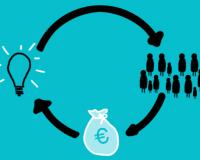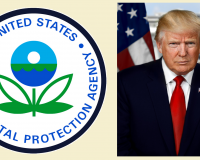
Vibrant Environment
Climate Change And Sustainability
All | Biodiversity | Climate Change and Sustainability | Environmental Justice | Governance and Rule of Law | Land Use and Natural Resources | Oceans and Coasts | Pollution Control

Last month, Trump Administration officials attended the latest round of U.N. climate negotiations in Bonn, Germany, but they weren’t there to discuss reducing emissions. Rather, they touted the promises of nuclear energy, natural gas, “clean coal,” and carbon capture. This is not surprising, given the President’s views on climate policy and his decision to withdraw the United States from the Paris Agreement. But even had Trump decided otherwise, the current Agreement does not do enough to reduce the risk of catastrophic climate change.

While EPA under Administrator Scott Pruitt seeks to drastically reduce the social cost of carbon (SCC), insurers already know that 2017 delivered the most expensive Atlantic hurricane season ever for insurance companies. Beyond this year, since the 1980s, the annual average losses to insurers have risen, increasing over the last decade from $10 billion to about $50 billion. “Insurers are rightfully worried that, in the long term, climate change could devastate their industry,” reported the Los Angeles Times. While Texas, Florida, and Puerto Rico flood, EPA recalculates, and insurance companies add up their costs.

September 22 marked the beginning of fall, and for some, that means it’s officially apple-picking season. Coincidentally, this isn’t the only type of apple officially in season. September 22 also marked the release date of Apple’s iPhone 8. And it’s not too long until you have your pick of a new Apple product with the release of the iPhone X on November 3.

In 2008, as many financial instruments dissolved stranding their investors in seas of debt and spasms of panic, a new instrument appeared at the intersection of the crowd and the web: crowdfunding.

On August 8, 2017, the D.C. Circuit held in Mexichem Fluor, Inc. v. EPA, No. 15-1328 (D.C. Cir. Aug. 8, 2017), that EPA overstepped its authority under the CAA when it banned the use of hydrofluorocarbons (HFCs) in products. HFCs were adopted as alternatives to ozone-depleting substances (ODSs) in the 1990s under the Montreal Protocol. Their adoption was encouraged through application of EPA's Significant New Alternatives Policy (SNAP) Program, which was created to help implement U.S.

Paris and Los Angeles are set to host the 2024 and 2028 Olympic Games, respectively. Hosting the games will offer these cities the chance to showcase not only their countries’ finest athletes, but also their technological innovation and cultural vibrancy. However, preparing for the Olympics also presents massive infrastructural, economic, and environmental challenges.

As reported previously in the Environmental Law Reporter's Weekly Update, several countries have expressed their desire to move away from vehicles powered by diesel and gas in recent months. Most recently, the British government committed to ban the sale of diesel and gas vehicles from 2040 to curb rising levels of nitrogen oxide.

IBM today is reaffirming its support for the Paris Climate Agreement and stating clearly how we will continue our decades-long work to lower greenhouse gas emissions. Our call for an international agreement on this issue is more than a decade old, and we first voiced our support for the Paris Agreement in 2015 when it was negotiated.
![Food Waste By Taz [CC BY 2.0 (http:/creativecommons.org/licenses/by/2.0)], via Wikimedia C](/sites/default/files/styles/blog_thumbnail/public/images/blog/800px-gi-market-food-waste.jpg?itok=0rfpD_8R)
Recycling food waste through composting and anaerobic digestion has the greatest potential by far to reduce the quantity of food waste going to landfills over the next 15 years relative to food waste reduction and reuse, according to ReFED. However, as more cities and states institute landfill food waste bans and other programs to promote recycling, the demand for centralized organic processing facilities is outpacing the supply. To address the gap, vendors are actively marketing to commercial customers new onsite pre-processing systems, including dehydrators, pulpers, and biodigesters. The systems can save money by reducing or eliminating off-site hauling of food waste and are well suited to facilities short on space and staff time. But the question arises: are the nutrients and energy in food waste really being recycled? The answer depends upon the next stage of processing.

The Trump Administration is clearly hungry for regulatory reform that reduces the cost and process burden of environmental regulation. Those who see a fundamental conflict between environmental protection and economic development welcome this development, as do those concerned that environmental requirements have become so extensive, detailed, and layered as to make compliance an elusive pursuit. Conversely, the shift raises concerns for those who see environmental protection and economic development as fully compatible goals and who fear environmental backsliding.